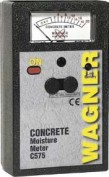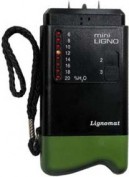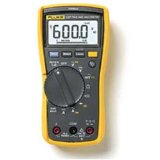Search This Site
Search With Google
When trying to Identify rising damp you need to be aware that there are other forms of damp which can affect your home. If you do identify rising damp then it is advisable to perform rising damp treatment as soon as possible. The longer you leave rising damp untreated, the larger the problem can become and more expensive.
When checking for rising damp there are certain visual and touch hints which will help you identify it. The visual signs will be:
Tide marks on the walls caused from water evaporation and the salts remaining. Generally the tide marks will be about a metre from the floor.
Damp patches and staining on the walls is another visual sign. These too will also be approximately a metre high as well.
Your wallpaper will begin to peel and come off the wall.
The skirting boards will be discoloured and show signs of decay.
As well as these visual signs you can also run your hands around the affected area. If you press the wallpaper with your hands and hear a scrunching sound, then there could be salts behind the wallpaper from the rising damp.
You want to also take a look at exposed brick or stone surfaces if possible. What you are looking for is evidence of salts forming and if the stone or brick is actually wet or dry.
All these “tests” can be performed by yourself without the need for any equipment.
You can also use a decent quality moisture meter to test the affected area for moisture content. The moisture meter will not determine if you have rising damp though. It will however alert you to the fact that you have high moisture content levels if that is the case. You then need to ascertain the type of damp issue your home is suffering from.
Rising damp will only occur on ground floor levels as it is caused by moisture from soil being drawn up in to the walls of your home.
Identifying Rising Damp
Rising Damp
Misdiagnosis Of Rising Damp
Just because you have damp in the home does not mean that it is rising damp. Rising damp is so often misdiagnosed and such damp as penetrating damp has many similar symptoms and characteristics. Diagnosing your damp problem incorrectly can result in performing the wrong damp proofing treatment. This is a waste of time and money and the original damp problem will still be present.
There are other issues and symptoms to look for when trying to identify rising damp.
The issues below could point to your damp problem being something other than rising damp:
Is the guttering on the home faulty or leaking. This could easily lead to a damp issue, particularly so if there is vegetation growing in the guttering.
Is all your plumbing up to scratch. Any leaking pipes can also cause a damp problem.
Was a new damp proof course installed within the building in the last 20 years.
If not then you could have damp issues.
The damp problem could have been caused by condensation.
Is your stonework or brickwork cracked or damaged in any way. This can allow rain penetration.
Is there any staining on the wall or stonework near to piping.
Is the pointing in your brickwork defective in any way.
Any of the above issues could suggest that your damp issue is not that of rising damp.
On This Site




Rising damp is a damp condition that can occur in your home and have serious consequences on the condition of your home as well as your wallet. Rising damp is the slow, yet persistent, upward movement of water from the lower sections of walls and structures by capillary action. Most cases of rising damp will be under one and a half meters, though there have been cases known to of being over 5 metres. The thing with rising damp though is misdiagnosis as many will presume that a stain on the wall is rising damp. Using a moisture meter on a stain on a wall will also show higher moisture content in the area, and again result in rising damp being the suspected culprit.
Rising damp will occur when ground water travels up through any porous building materials such as brick, mortar and plaster and leave a tide mark on the lower part of affected walls. The present tide mark is caused by nitrates and chlorides which are present in the ground water. As the water evaporates, these salts will remain and accumulate at the peak of the rising damp.
Within a building, any unwanted moisture can cause problems with the structure of the building. The majority of damp problems within buildings are caused by condensation, rising damp or rain penetration. Dampness causes secondary damage to a building. Moisture can cause fungi to grow in wood, paint and plaster to deteriorate, wallpaper to loosen and external mortar to crumble.
Rising Damp Treatment


The complete moisture meter website
Moisture Meter Guide
Once rising damp has be detected, you need to treat it as soon as possible. The most common ways for treating rising damp are to either inject a silicone type chemical or to use an active electro osmotic system. Both treatments will depend upon the thickness of the walls in your home. But usually holes are drilled in a band around the affected wall area and the recommended chemical is injected in to them. Otherwise the electro osmotic system is installed. A third option is to have a new damp proof barrier put in where the problem exists.
After any of these treatments, any salt contaminated plasterwork has to be replaced. If you do not replace this plasterwork any salt that is present will still absorb moisture from the air and give a damp problem issue again.
Chemical Damp Proof Course
This is recommended for most walling types. The chemicals are injected under pressure in to holes in the walls to form a barrier against rising damp.
Injection Creams
These creams can be injected in to walls under low pressure. They will react and be carried by the rising damp in to mortar beds. The creams will then crystalise to form a rising damp barrier.
Electro Osmotic Treatment
This system will introduce an electric current in to the wall above the ground level. This small electric current will push any moisture back down the wall to keep the walls dry and free of moisture.
To Care Is To Share
Moisture Meter Guide 2010 Contact details:garnett65@hotmail.com
| Tramex Moisture Encounter Plus |
| Tramex Compact Wood Moisture Meter |
| Tramex Concrete Encounter Moisture Meter |
| Tramex Skipper Plus Moisture Meter |
| Tramex Roof And Wall Moisture Scanner |
| Sonin Digital Moisture Meter model 50218 |
| Sonin Digital Moisture Meter 270 model 50270 |
| Sonin Moisture Test Tool model 50210 |
| Sonin Moisture Test Meter Model 50211 |
| Oak |
| Douglas Fir |
| Beech Tree |
| Elm Tree |
| Hickory Tree |
| Maple Tree |
| Pine Tree |
| Prevent And Repair Gaps In Wooden Floorboards |
| How To Fix A Squeaky Hardwood Floor |
| How To Repair A Hardwood Floor That Has Buckled |
| Which Is The Best Firewood? |
| Concrete |
| Concrete Moisture |
| Screed Moisture Meter |
| SDS Drill |
| Belle Cement Mixer |
| SDS Drill Advice |
| Which SDS Drill |
| SDS Drill Accessories |
| Drilling Into Concrete |
| Kennedy Tool Box |
| Moisture - Basic Facts |
| Types Of Damp |
| Wet Rot |
| Dry Rot |
| Mold |
| Water Leak Detection |
| Stucco Moisture |
| Water Damage |
| Moisture And Rust |
| Moisture Damage To A Chimney |
| Wallpaper Stripper |
| Plaster Mixer |
| Why Worry About Moisture Problems |
| Does Your Home Have A Moisture Problem? |
| How To Solve Moisture Problems |
| How To Use Anti Mold Paint |
| Rising Damp |
| Condensation |
| Salt Damp |
| How To Avoid Bathroom Condensation |
| How To Remove Black Mold |
| How To Prevent Bathroom Mold |
| Soldering Kit |
| Soldering Kit Contents |
| Soldering Kit Advice |
| Bonsai Tree Classification |
| Growing Bonsai From Seed |
| Bonsai Tree Care |
| Bonsai Tree Training |
| Bonsai Tools |
| Displaying Bonsai |
| Bonsai Calendar |
| Bonsai Plants |
| The Thirsty Light Curve Moisture Meter |
| The Thirsty Light Ladybird Moisture Meter |
| The Thirsty Light Bumble Bee Moisture Meter |
| The Thirsty Light Butterfly Moisture Meter |
| Hanna Instruments |
| Agratronix Portable Coffee Moisture Tester |
| Lawn Aerator |
| Lawn Roller |
| Lawn Rake |
| Lawn Sand |
| Chainshot |
| Chainsaw Gloves |
| Chainsaw Trousers |
| Chainsaw Boots |
| Mac 4 - 20 XT Chainsaw |
| Mac 738 Chainsaw |
| Mac 842 Chainsaw |
| Mac 20X Power Chainsaw |
| Einhell BG-PC 3735 Chainsaw |
| Einhell BG-PC 4040 Chainsaw |
| Einhell BG-PC 5045 Chainsaw |
| Poulan P3314 Chainsaw |
| Poulan P4018 Chainsaw |
| Poulan Pro PP3816AV Chainsaw |
| Poulan Pro PP4218AVX Chainsaw |
| Poulan Pro PP4620AVX Chainsaw |
| Efco MT 4100 SP Chainsaw |
| Efco MT 3500 Chainsaw |
| Efco 132 S Chainsaw |
| Efco 147 Chainsaw |
| Efco 152 Chainsaw |
| Efco MT 7200 Chainsaw |
| Efco MT 8200 Chainsaw |
| Efco MT 3750 Chainsaw |
| Methods Of Obtaining Soil Moisture Levels |
| Hygrometer |
| Psychrometer |
| Rain Gauge |
| Wave Ventilation System |
| Humidity |
| Hygrometer For Keeping Reptiles |
| Humidor |
| Weather Stations |
| Musical Instrument Storage |